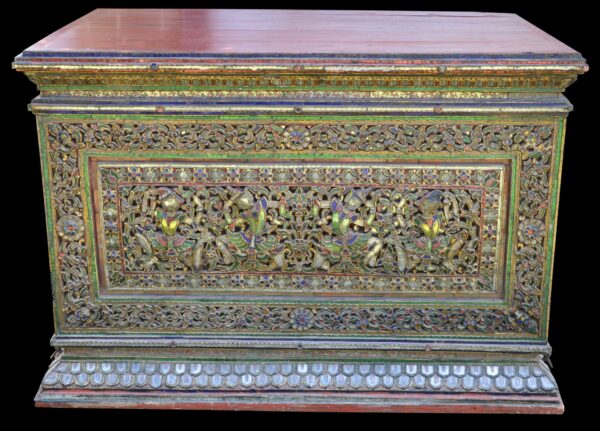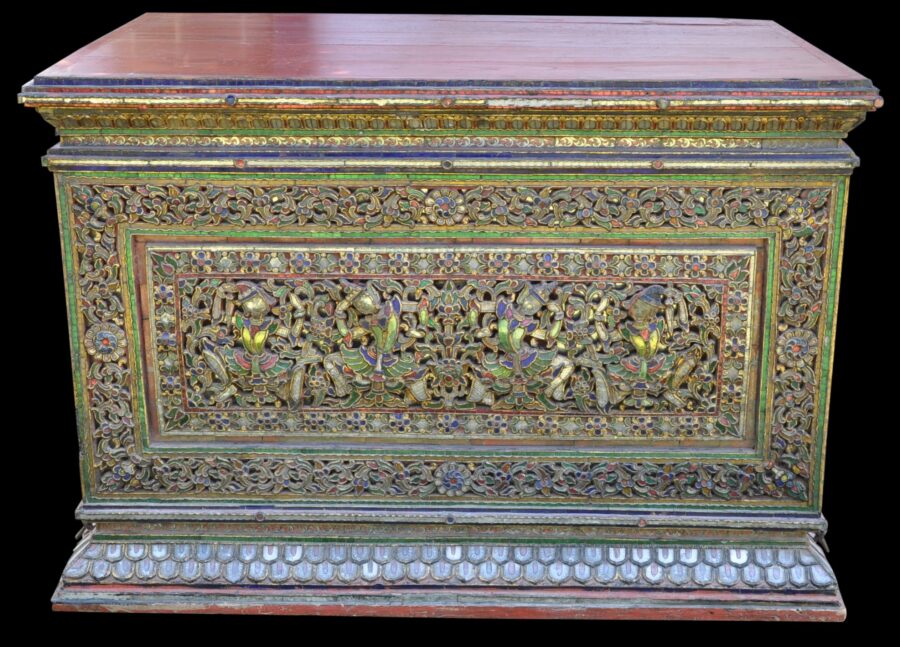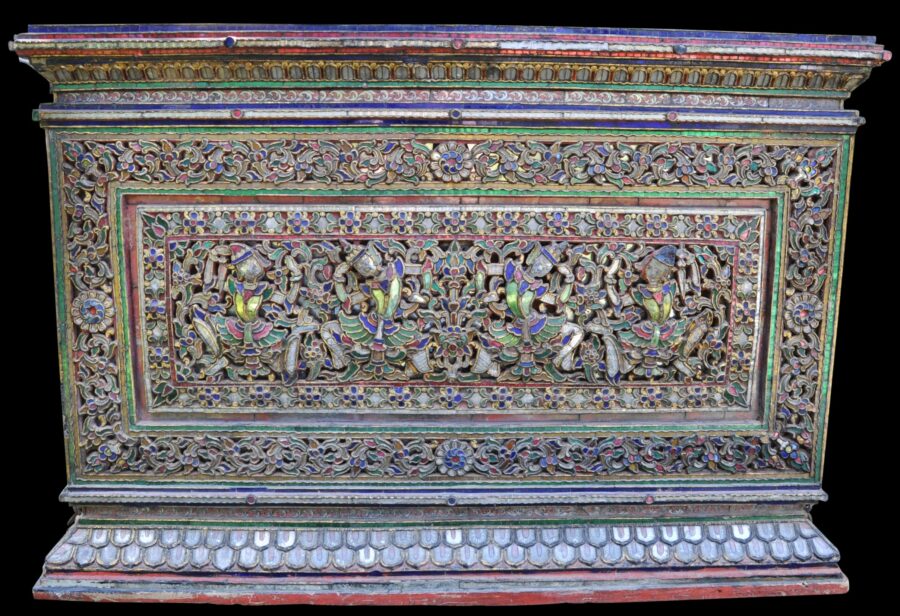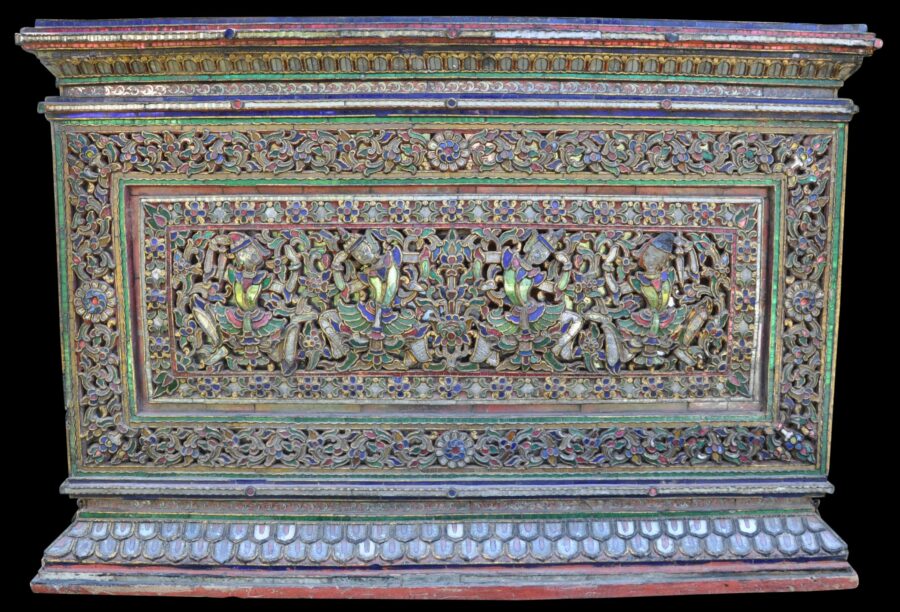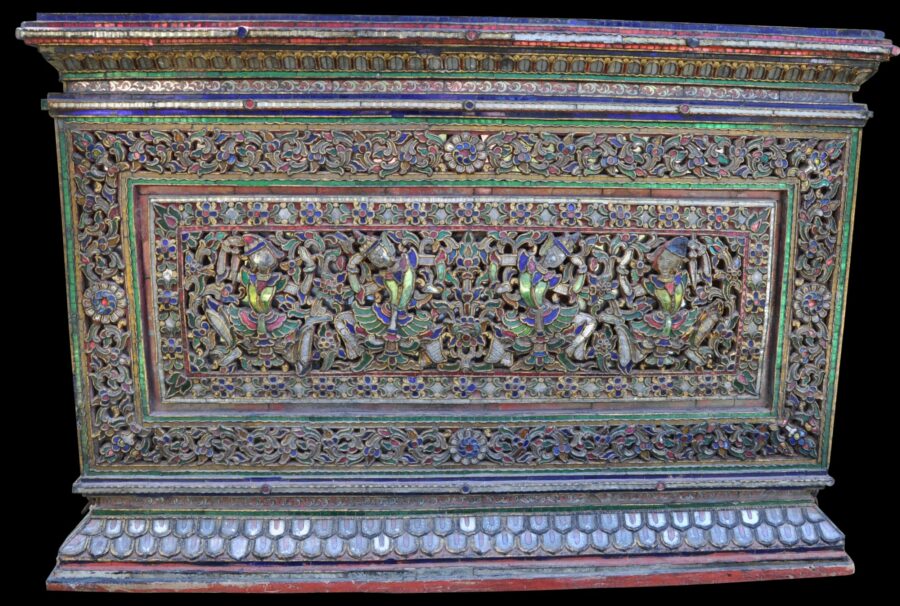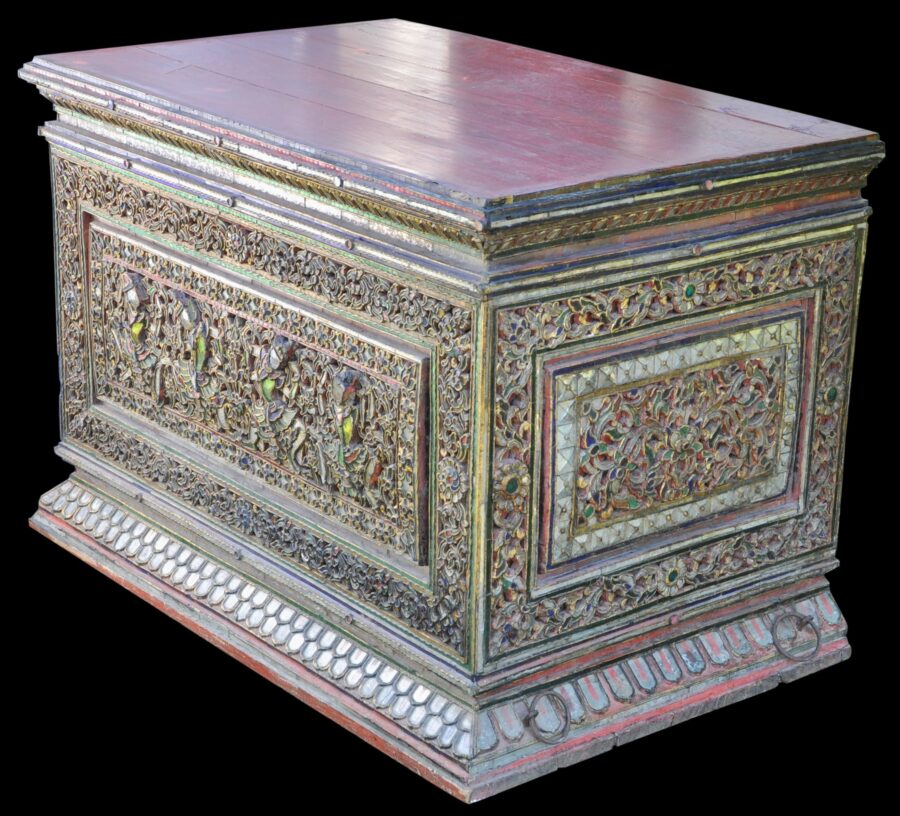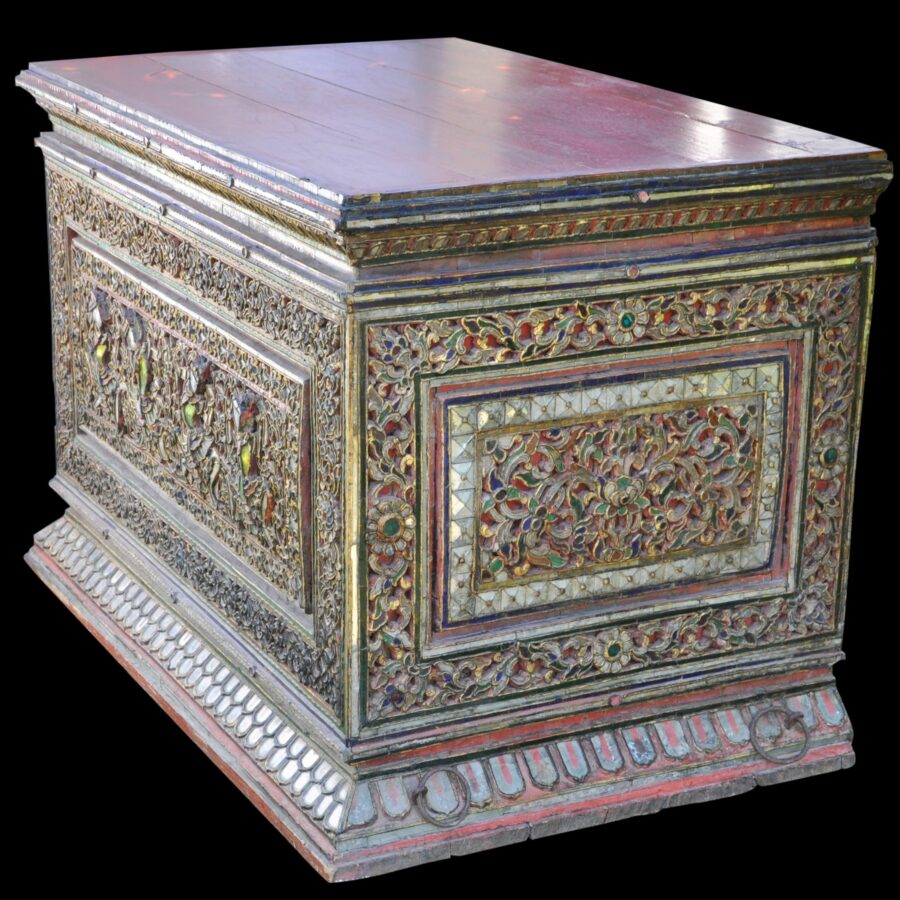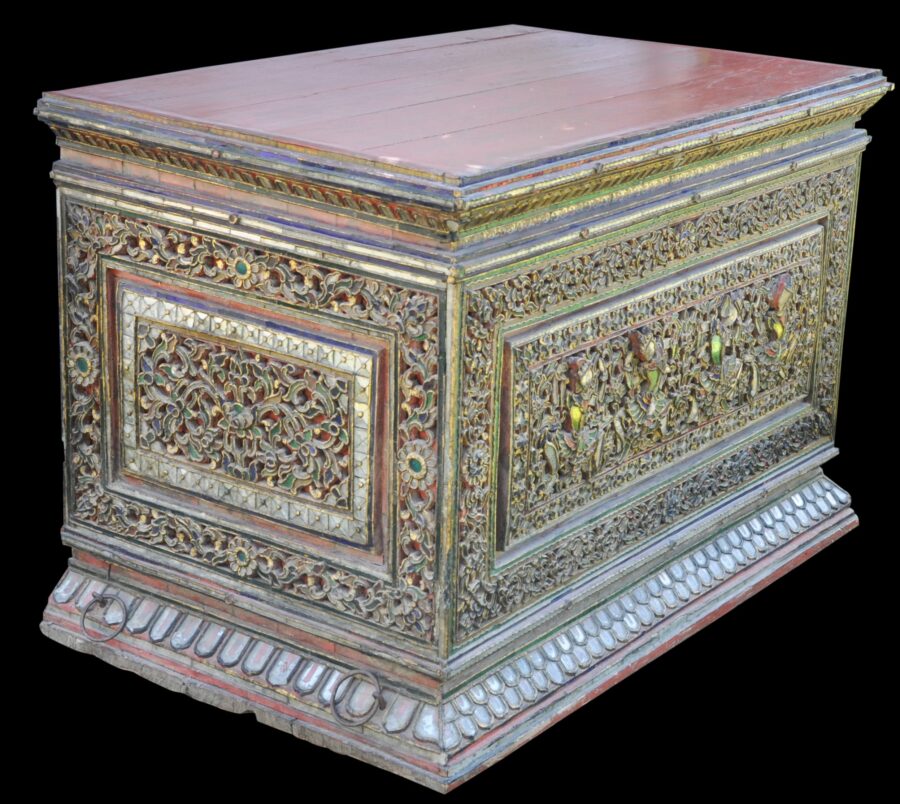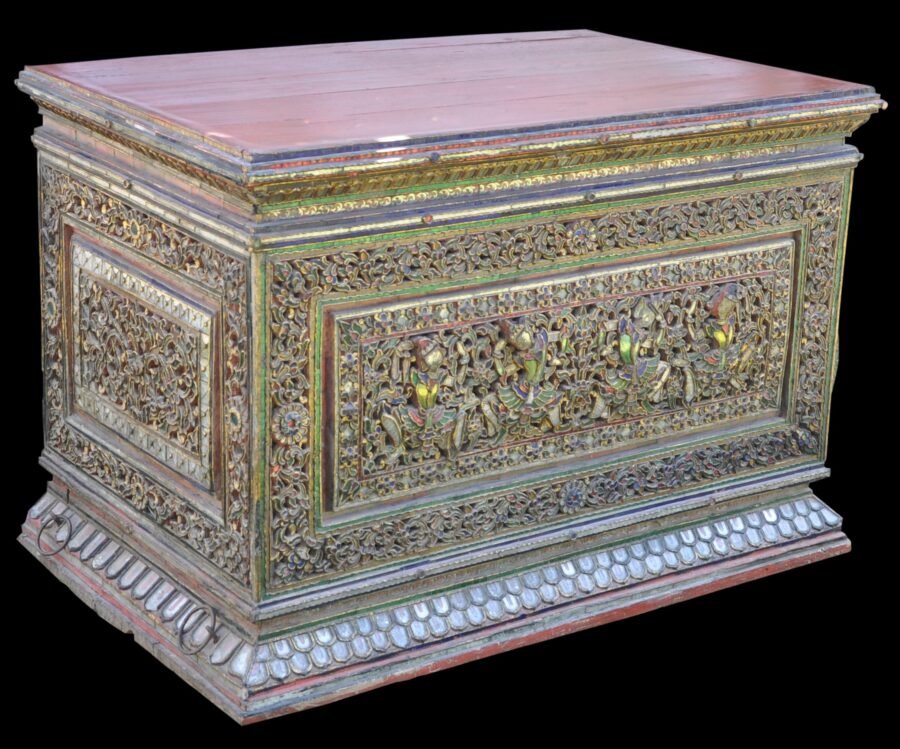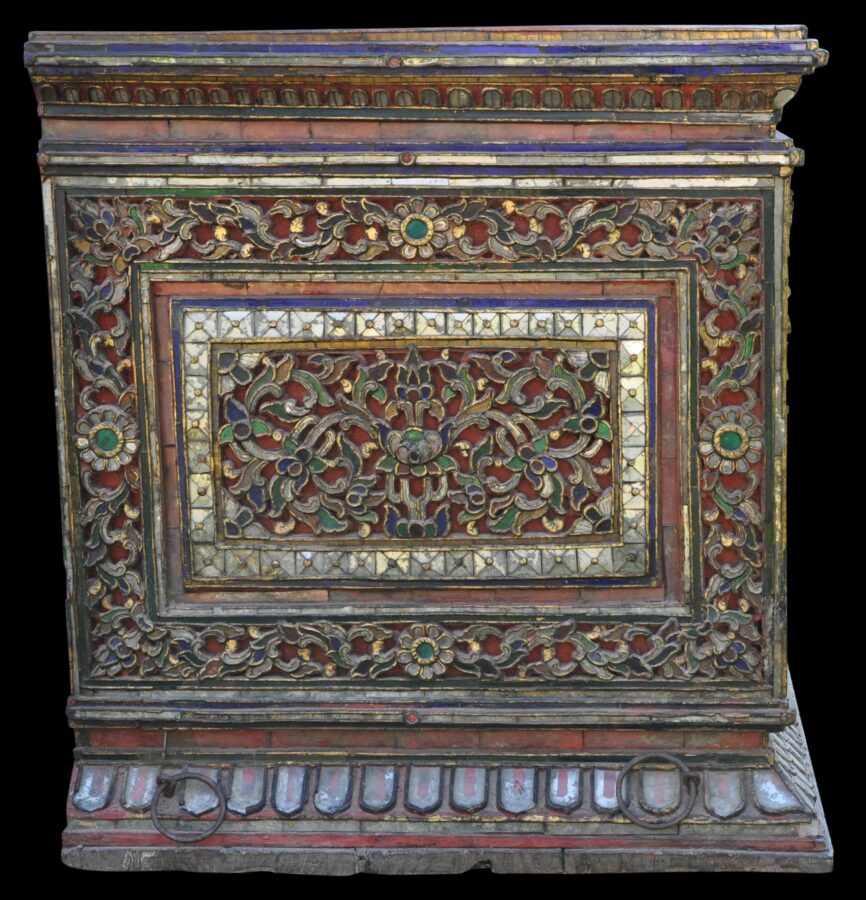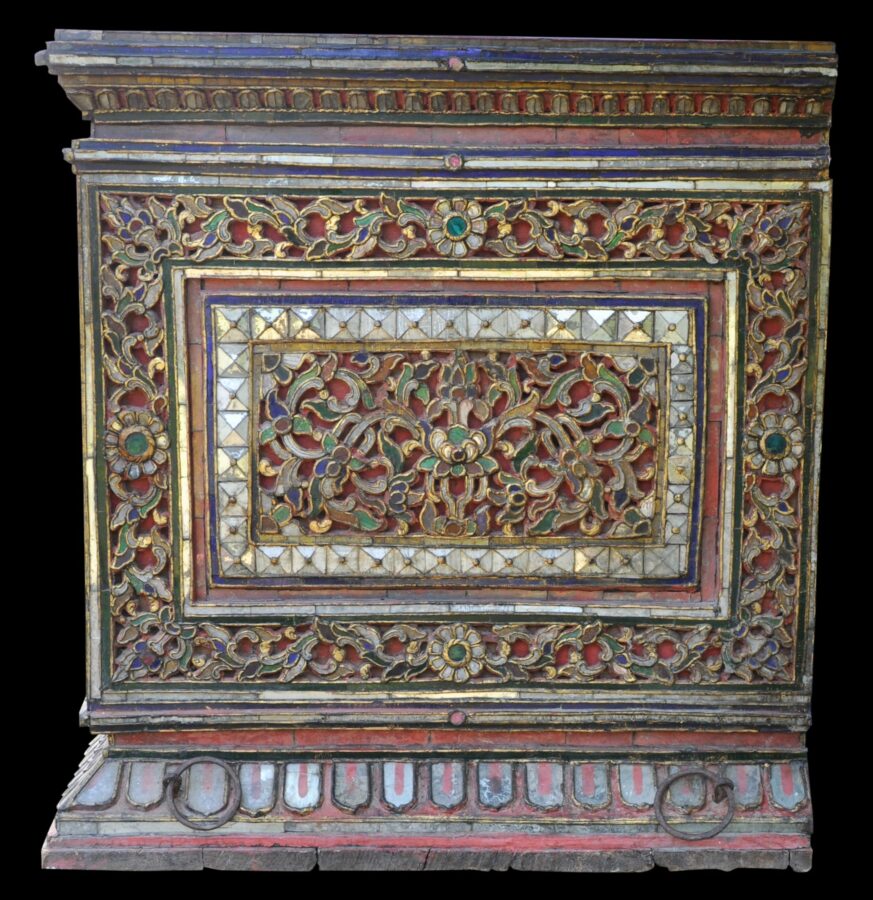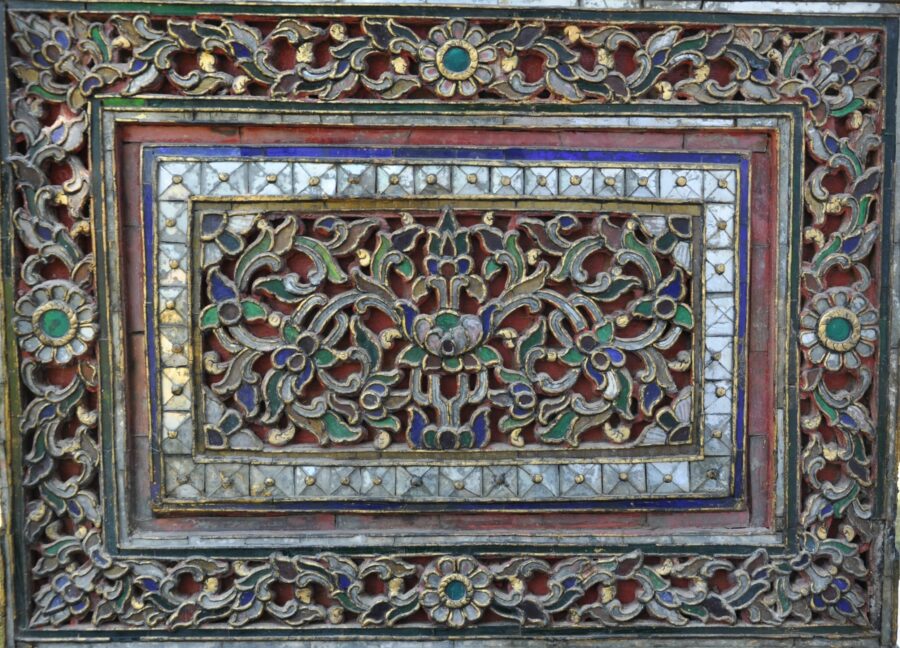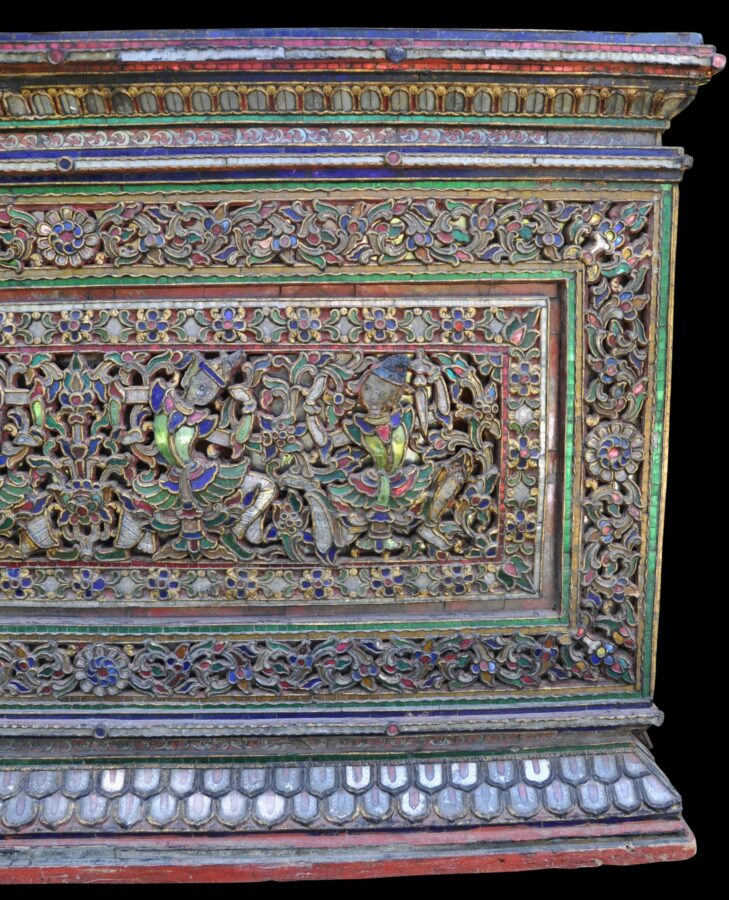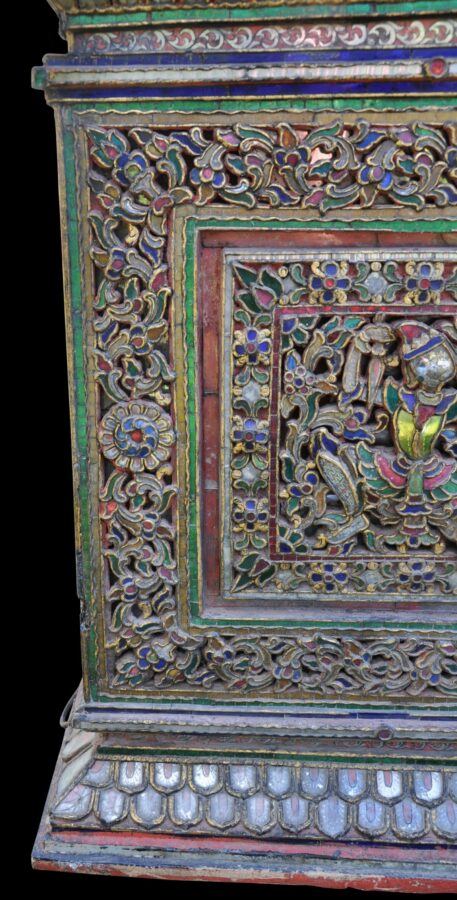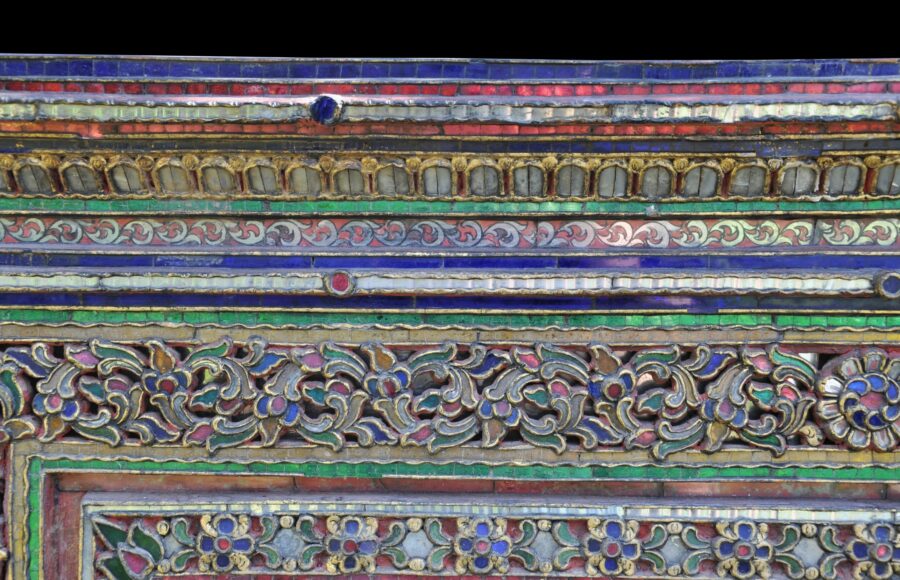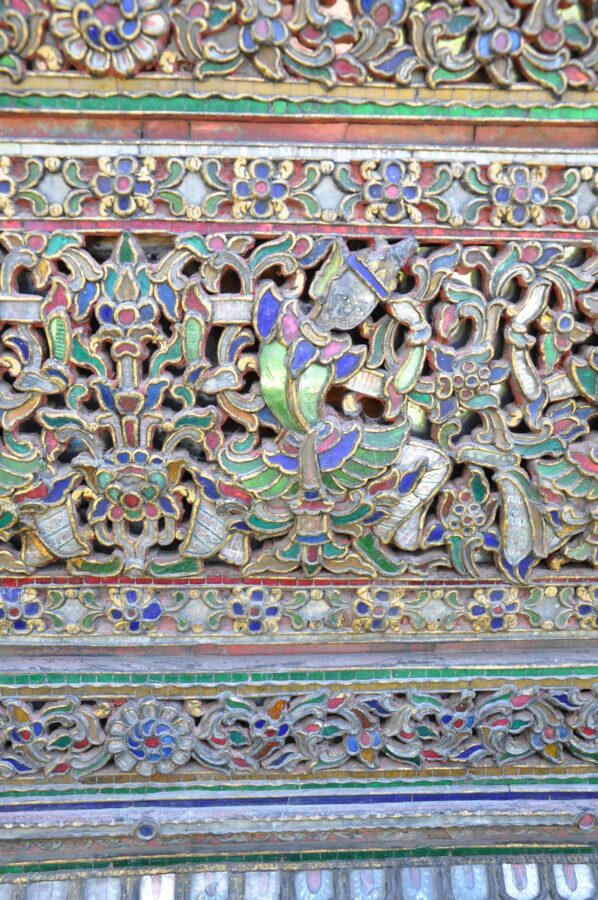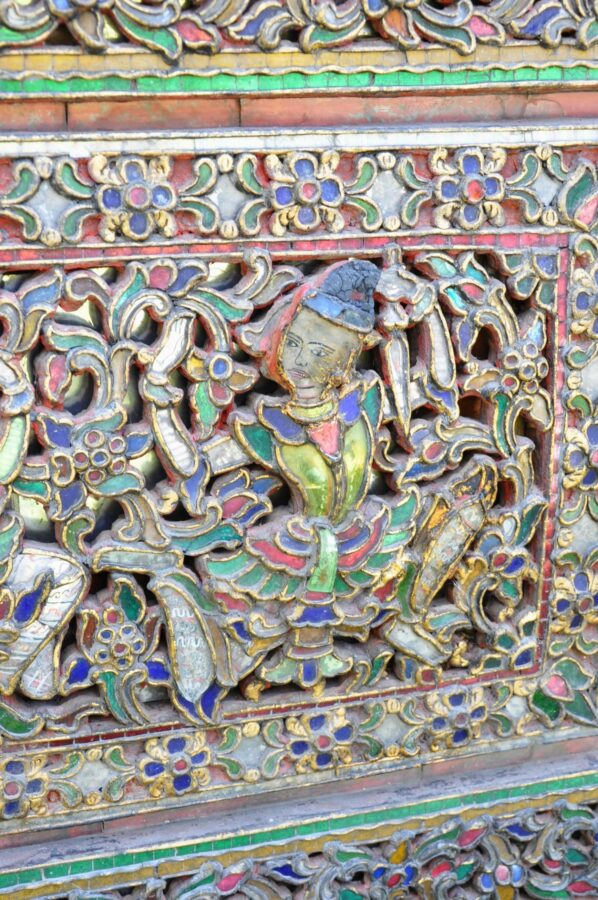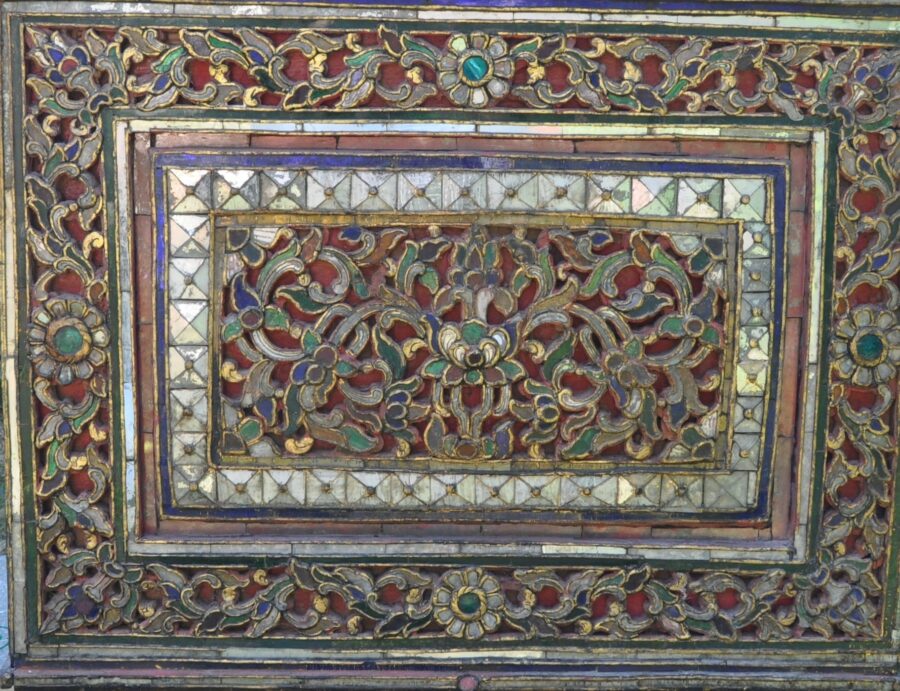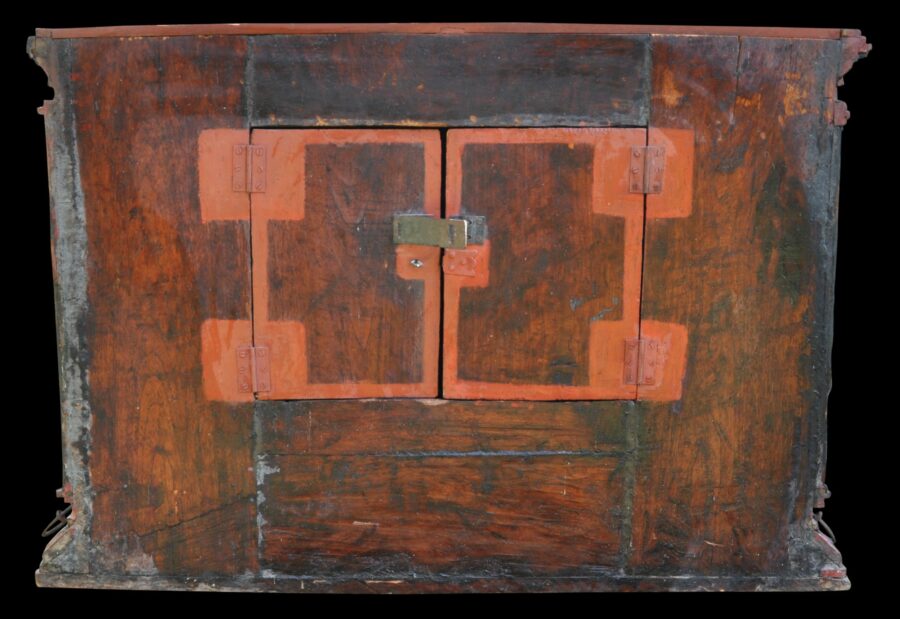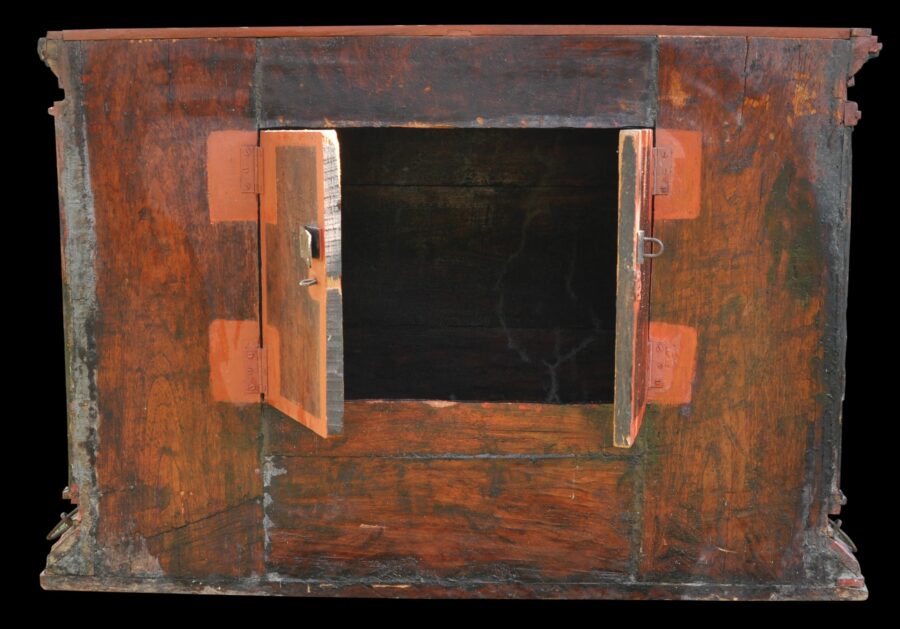The quality of the sumptuous decoration of this large chest suggests royal provenance, and indeed, the decoration is similar to that on items known to have come from the palace compound in Mandalay of Burma’s last king.
The chest is of teak, and is covered on the front and sides with pieces of glass backed with blue, green, red, light green or yellow and silver foil, all in pierced, high relief, and set against gilded lacquer. The top is decorated with cinnabar-red paint.
The panels are decorated with borders of flowers but the front also has a central panel that features four figures – perhaps nats – in traditional dress. The details of their faces have been painted onto the glass in black.
The chest most probably served both as a scripture chest (sadaik) and also as an altar for a Buddha or related images. Unusually, the chest is opened not by the conventional hinged top but by small doors on the back of the chest.
The chest has two large iron rings in each side to secure it either to the floor or perhaps to a stand. Possibly, these rings also allowed the chest to be more easily carried.
The chest sits on a flared foot that is decorated with a border of chevron-shaped mirrored glass inserts.
The Museum has (or did have) several items of furniture taken from the palace compound of King Thibaw after the siege of Mandalay in 1885. These include a mirror and a set of double doors, all decorated with coloured glass in a manner that is very similar to the decoration on this chest both in terms of the lavish use of this decoration and also in terms of the types and shapes of glass segments used. The mirror and doors are illustrated in Lowry (1974, items 40 & 41). (Also, a chest with related decoration but far less fine than the example here is in the Victoria & Albert Museum.) Given the doors and mirror, with their lavish decoration, it is seems likely that the chest here also could be from the Mandalay Palace compound or something equivalent. Large numbers of items, including furniture, were taken by the British from the Mandalay Palace, and these items did find their way back to the UK, where they joined both public and private collections.
It is possible too that the chest has come from an important monastery. Most monasteries had a library where Buddhist scriptural texts were kept, often stored in chests of various sizes. Similar decoration was used in ceiling panels in the pavilions that surround the Shwedagon Pagoda in Rangoon.
The Mandalay Palace was conceived and constructed during the reign of King Mindon who usurped the throne in a bloodless coup following the Second Anglo-Burmese War in 1852. The capital had been at Amarapura, but given its association with defeat by the British and on the advice of astrologers, the new capital was moved to Mandalay. Construction of the new palace compund was finished in 1859.
The chest here is in excellent condition given its age. There is no restoration, and there are almost no losses to the glass inlay.
References
Falconer, J. et al, Myanmar Style: Art, Architecture and Design of Burma, Thames & Hudson, 1998.
Fraser-Lu, S., Burmese Crafts: Past and Present, Oxford University Press, 1994.
Fraser-Lu, S., Burmese Lacquerware, White Orchid Books, 2000.
Lowry, J., Burmese Art, Victoria and Albert Museum, 1974.


